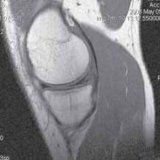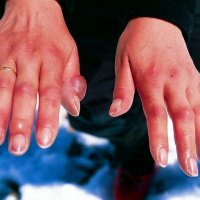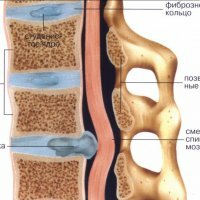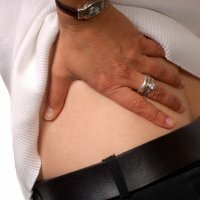Rupture of the posterior horn of the medial meniscus

The most common knee injury is a knee joint meniscus injury. The meniscus can be damaged due to a combined or indirect knee injury. Usually a meniscus injury is accompanied by a turn of the shank outside( the inner meniscus suffers), a sharp extension of the bent joint, and a sharp change in the position( reduction or retraction) of the shin. One of the most difficult knee injuries is the rupture of the horn of the inner( medial) meniscus.
Between the tibia and the femur in the knee joint, there are cartilaginous layers of the semilunar form - menisci. They are designed to increase stability in the joint by increasing the area of contact of bones. There is an internal( so-called medial) meniscus and an outer( lateral) one. Conditionally they are divided into three parts: front, middle, rear( front horn, body, rear horn respectively).
The back of the meniscus does not have its own blood supply, it feeds its synovial fluid, which constantly circulates. Therefore, if a rupture occurs, the back of the inner meniscus is not capable of self-adhesion. Since such a trauma is very painful, it requires immediate treatment.
In order to correctly diagnose a meniscus rupture, MRI or radiographic examination of the knee with contrast is preliminary determined accurately the severity and degree of complication.
Symptoms of a meniscus rupture
Traumatic ruptures. After the rupture, painful sensations appear and the knee swells. If the pain occurs when you descend the stairs, then most likely, there was a rupture of the back of the meniscus.
When a meniscus ruptures, a part of it breaks off, begins to hang out and interferes with movements in the knee joint. If the gaps are small, they usually cause a feeling of difficulty in movement or painful clicks. In the case of a large rupture, joint blockade often occurs. This is due to the fact that the torn and dangling fragment of the meniscus, which has a relatively large size, moves to the center of the joint and prevents some movements. If the rupture of the horn of the meniscus, then usually bending the knee is limited.
When the meniscus ruptures, the pain can be so strong that a person can not step on the foot, and sometimes the gap only makes itself felt with pain in certain movements, for example, when climbing a ladder. In this case, the descent can not cause pain.
If an acute has occurred with a simultaneous ligament injury, the swelling usually develops faster and more pronounced.
Degenerative( or chronic) ruptures of usually occur in humans after forty years. Strengthening of pain sensations and swelling can not always be detected, since they develop gradually. In the history of health, it is not always possible to find indications of trauma, and sometimes a gap may appear after the usual rise from the chair. Also at this point, blockade of the joint may occur, but usually chronic disruptions are manifested only in the form of pain. It is worth noting that with this rupture of the meniscus, the adjacent cartilage, which covers the femoral or tibia, is often damaged.
Like acute ruptures, chronic disruptions can manifest themselves completely differently: sometimes pain occurs only with a certain movement, and sometimes it does not even hurt to step on the leg.
Treatment of meniscus ruptures
If it is accurately determined that a meniscus rupture has occurred in the knee, then the therapy of such a trauma is carried out in the conditions of a medical hospital. Treatment is appointed by the doctor depending on the nature of the injury and its severity. If the meniscus is injured insignificantly, then conservative treatment methods are usually used - physiotherapy or manual therapy, medications( painkillers and anti-inflammatory drugs).
If the rupture is severe, causes severe pain, leads to blockage of the joint, then surgery is needed to suture the meniscus( if serious irreversible damage occurs) or to its removal( meniscectomy).Operative intervention is attempted using an arthroscope using a minimally invasive procedure.



